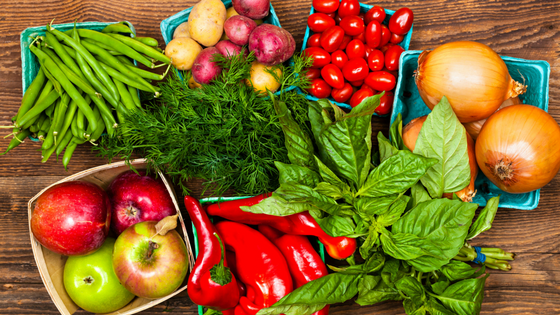February is American Heart Month. Cardiovascular disease, including heart disease and stroke, remains the leading global cause of death, with more than 17.3 million deaths each year. By 2030, that number is expected to rise to more than 23.6 million.
There are steps you can take to reduce your risk for cardiovascular disease: exercise, manage stress and, most of all, make changes to your diet. The Mayo Clinic suggests starting with these seven heart-healthy diet tips.
- Practice Portion Control
Portion control is the key to moderate eating. Many restaurants have blown the lid off portion size. Just think about McDonalds’ Super-Size menu or consider the Double Western Bacon Cheeseburger from Carl’s Jr. This one sandwich exceeds your daily requirement for meat and has more than 1,000 calories. Our food options have gotten so big over the last couple decades, that many of us may not know just how much a serving actually is. One serving of meat is the size of a deck of cards. One serving of pasta is ½ cup, or the size of a hockey puck – not a huge bowl. Use a small plate or bowl to help control your portions until you can get a handle on just how much you should be eating.
- Eat More Vegetables & Fruits
Much of our heart health could be improved if we substitute the “bad” stuff we eat (trans fats, processed foods, etc.) with “good” stuff like fruits and vegetables. These superfoods contain much needed vitamins and minerals, plus are low in calories and high in fiber. To get more in your diet, make vegetables the star of your meal, instead of the sidekick. Go for stir-fry or make a big salad your main dish. Keep vegetables cut and ready-to-eat in your fridge and keep fruit on the counter.
- Choose Whole Grains
White bread, muffins, donuts and cakes may taste delicious, but they aren’t doing your waistline any favors. Carrying excess fat in your abdomen, called visceral fat, can increase your risk of heart disease by increasing cholesterol and raising blood pressure. Opt instead for whole grains, which can regulate blood pressure. Go for: whole-wheat bread, high-fiber cereal, brown rice, oatmeal and whole-grain pasta.
- Limit Your Unhealthy Fats
Trans and saturated fats can lead to high cholesterol, which can cause a buildup of plaques in your arteries. Trans fats are fats that are solid at room temperature: butter, margarine and shortening. Saturated fats come from animal proteins. Reduce both by choosing fats that are monounsaturated, like olive or canola oil, and polyunsaturated, found in fish, avocados, nuts and seeds. These fats may help lower your total blood cholesterol.
- Switch To Low-Fat Protein
Swap out fatty, marbled meats and choose low-fat protein instead. This includes lean meat, poultry, fish, low-fat dairy products and eggs. Experts suggest staying away from whole fat dairy, spareribs, hot dogs and sausage, bacon and organ meats. Plant proteins, like soy or legumes, are a great protein option that can reduce your fat and cholesterol intake.
- Pass On The Salt
Eating high amounts of sodium can increase your risk of high blood pressure. And, while cooking and table salt are part of our daily intake, much of the salt we eat comes from canned or processed foods, like soups and frozen dinners. Instead, choose reduced sodium options or make your own. There are a lot of easy recipes available online for soups and slow-cooker meals. Salt can also sneak into your diet through condiments. Check labels and see if your favorite soy sauce or ketchup comes in a low-sodium version.
- Create Daily Menus
An easy way to stay on track with eating healthy is to create a meal plan for the week. Plan out meals that incorporate the tips above, like utilizing more vegetables, whole grains and lean protein. Meal planning also ensures you get a variety of foods into your diet. For example, choose chicken breasts one day and a meatless meal the next. Meal planning also helps ensure the fresh produce you buy doesn’t go to waste.
Allow yourself to indulge once in a while. Being super strict with your diet could end up sabotaging you. The key is to allow indulgences to become the exception, not the rule. Stick to these tips to make healthy eating more than a diet, but a long-term goal.


